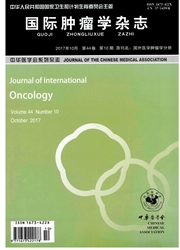

 中文摘要:
中文摘要:
最近的研究在嗅觉的薄板 propria 作为居民干细胞的一种新类型识别了嗅觉的 ecto 间充质的干细胞(OE-MSCs ) 。然而,它仍然保持不清楚是否 OE-MSCs 拥有任何 immunoregulatory 功能。在这研究,我们发现老鼠 OE-MSCs 比骨头表示了更高转变的生长因素贝它和 interleukin-10 层次导出髓的 MSC。在文化, OE-MSCs 经由直接压制受动器 T 房间增长并且增加规章的 T (Treg ) 房间扩大施加了他们的抑制免疫力的能力。在有导致骨胶原的关节炎的老鼠, OE-MSCs 的采纳转移显著地压制了关节炎发作和疾病严厉,它被增加的 Treg 房间伴随并且在 vivo 减少了 Th1/Th17 房间回答。一起拿,我们的调查结果在调整 T 房间回答识别了 OE-MSCs 的新奇功能,显示那 OE-MSCs 可以为风湿性关节炎和另外的自体免疫的疾病的处理代表新房间治疗。
 英文摘要:
英文摘要:
Recent studies have identified olfactory ecto-mesenchymal stem cells (OE-MSCs) as a new type of resident stem cell in the olfactory lamina propria. However, it remains unclear whether OE-MSCs possess any immunoregulatory functions. In this study, we found that mouse OE-MSCs expressed higher transforming growth factor-beta and interleukin-10 levels than bone marrow-derived MSCs. In culture, OE-MSCs exerted their immunosuppressive capacity via directly suppressing effector T-cell proliferation and increasing regulatory T (Treg) cell expansion. In mice with collagen-induced arthritis, adoptive transfer of OE-MSCs markedly suppressed arthritis onset and disease severity, which was accompanied by increased Treg cells and reduced Th1/Th17 cell responses in vivo. Taken together, our findings identified a novel function of OE-MSCs in regulating T-cell responses, indicating that OE-MSCs may represent a new cell therapy for the treatment of rheumatoid arthritis and other autoimmune diseases.
 同期刊论文项目
同期刊论文项目
 同项目期刊论文
同项目期刊论文
 期刊信息
期刊信息
